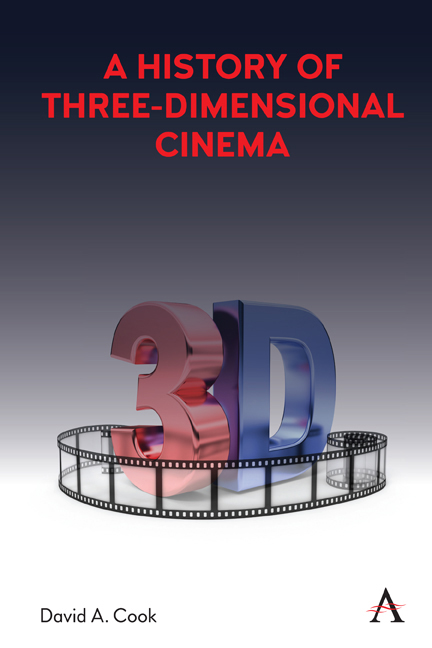Book contents
- Frontmatter
- Dedication
- Content
- List of Figures
- Acknowledgements
- Prefatory Note/Introduction
- 1 “A New Way to Simulate Presence”: The Foundations of Stereoscopic Entertainment, 1427–1888
- 2 “A Very Vivid Impression of Movement”: Early 3D Cinema, 1895–1952
- 3 “See It in 3 Dimension!”: The First Hollywood 3D Boom, 1952–55
- 4 Stereoscopic Revival, 1970–85
- 5 The Age of IMAX, or the “Immersive Cinema,” 1986–2009
- 6 The Blockbuster Years: Digital 3D, 2010–20
- 7 “A Different Kind of Mental Image”: Some Aesthetic Considerations about 3D
- 8 “Experience on Demand”: Virtual Reality
- 9 Conclusion
- 3D Discography: Discs Viewed or Sampled in Preparation for This Book
- Selected Bibliography
- Index
6 - The Blockbuster Years: Digital 3D, 2010–20
Published online by Cambridge University Press: 22 October 2021
- Frontmatter
- Dedication
- Content
- List of Figures
- Acknowledgements
- Prefatory Note/Introduction
- 1 “A New Way to Simulate Presence”: The Foundations of Stereoscopic Entertainment, 1427–1888
- 2 “A Very Vivid Impression of Movement”: Early 3D Cinema, 1895–1952
- 3 “See It in 3 Dimension!”: The First Hollywood 3D Boom, 1952–55
- 4 Stereoscopic Revival, 1970–85
- 5 The Age of IMAX, or the “Immersive Cinema,” 1986–2009
- 6 The Blockbuster Years: Digital 3D, 2010–20
- 7 “A Different Kind of Mental Image”: Some Aesthetic Considerations about 3D
- 8 “Experience on Demand”: Virtual Reality
- 9 Conclusion
- 3D Discography: Discs Viewed or Sampled in Preparation for This Book
- Selected Bibliography
- Index
Summary
The blockbuster syndrome
During the 1970s, the calculus by which a movie was considered successful or not in the marketplace had changed. Between the mid-and late 1960s, the studios teetered on the brink of insolvency because of the impact of the Paramount decrees, the national diffusion of television, and poor financial decisions made in their wake—the abortive attempt to convert to full stereoscopic production in the early 1950s among them. Starting with Universal's acquisition by MCA in 1962 and Paramount's absorption by Gulf and Western Industries in 1966, the classical Hollywood studios were all bought up by larger corporations who didn't really know how to run them, resulting in an industry-wide recession between 1969 and 1971. At the same time, in October 1968, the 34-year-old Production Code Administration (PCA) was replaced by a Code and Ratings Administration (CARA) that transformed the national audience—more or less homogeneous since its formation, except at the ethnic fringes—into a demographically segregated one. The conviction grew in Hollywood that the regular flow of product was no longer profitable because there was no longer a regular and predictable audience for its films. In such a volatile context, if a few productions became big hits, they could amortize those that produced a loss or simply broke even. This idea of engineering “event” movies to generate windfall profits and carry the rest along with them became known as “the blockbuster syndrome.” This was not a new phenomenon—“blockbusters” like Paramount's The Ten Commandments (Cecil B. DeMille, 1956) and MGM's Ben-Hur (William Wyler, 1959) had kept their respective studios profitable for years after their release, and expensive flops like Cleopatra (Joseph Mankiewicz, 1963) had nearly ruined 20th Century Fox. What was different was the amount of capital involved in hedging the bets.
Between 1972 and 1979, the average production budget or “negative cost” for a single film rose by 178 percent, or nearly four times the rate of general inflation. By the end of 1979, negative costs had doubled their 1977 level to reach the then-staggering sum of $8.9 million, so that the financial risks of production were substantially multiplied.
- Type
- Chapter
- Information
- A History of Three-Dimensional Cinema , pp. 101 - 126Publisher: Anthem PressPrint publication year: 2021

